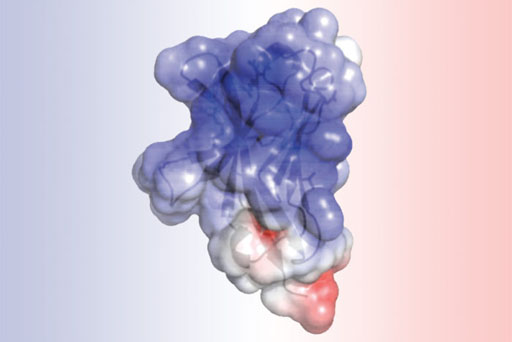Single Mutation Causes Two Separate Neurodegenerative Diseases
By LabMedica International staff writers
Posted on 04 Jan 2017
Resolution of the X-ray crystallography structure of variants of TREM2 (Triggering receptor expressed on myeloid cells 2) protein revealed that mutations responsible for Nasu-Hakola disease were buried deep within the core of the folded protein, while mutations associated with Alzheimer’s disease resided on the surface of the protein.Posted on 04 Jan 2017
Individuals with rare mutations in the gene that encodes the TREM2 protein have a substantial risk of developing Alzheimer’s disease in their mid-60s. A different set of mutations in the same gene can cause a more severe degenerative brain disease known as Nasu-Hakola disease in much younger people. The mutations causing Alzheimer’s and Nasu-Hakola disease result in the production of mutant TREM2 proteins that differ from the normal protein by only a single amino acid. It is not clear how different mutations affecting the same protein can give rise to two distinct neurodegenerative diseases.

Image: Mutations associated with Alzheimer\'s disease alter the surface structure of the TREM2 protein, while mutations linked to Nasu-Hakola disease disrupt the protein\'s interior. Such alterations may impair TREM2\'s normal role in removing cellular waste via phagocytosis (Photo courtesy of Daniel L. Kober, Washington University School of Medicine).
To address this question, investigators at Washington University School of Medicine (St. Louis, MO, USA) used X-ray crystallography to construct three-dimensional models of the proteins at a resolution of 3.1 Angstroms. These models revealed that mutations found in Nasu-Hakola disease were buried within the protein whereas Alzheimer’s disease risk variants were found on the surface, suggesting that these mutations had distinct effects on TREM2 function.
Biophysical and cellular methods indicated that Nasu-Hakola mutations impacted protein stability and decreased folded TREM2 surface expression, whereas Alzheimer’s risk variants impacted binding to the TREM2 glycosaminoglycans ligands. Additionally, the Alzheimer’s risk variants appeared to epitope map a functional surface on TREM2 that was unique within the larger TREM family.
“We do not know exactly what dysfunctional TREM2 does to contribute to neurodegeneration, but we know inflammation is the common thread in all these conditions,” said senior author Dr. Thomas J. Brett, assistant professor of medicine at Washington University School of Medicine. “Our study looked at these mutations in TREM2 and asked what they do to the structure of the protein itself, and how that might impact its function. If we can understand that, we can begin to look for ways to correct it.”
“Exactly what TREM2 does is still an open question,” said Dr. Brett. “We know mice without TREM2 have defects in microglia, which are important in maintaining healthy brain biology. Now that we have these structures, we can study how TREM2 works, or does not work, in these neurodegenerative diseases. TREM2 also has been implicated in other inflammatory conditions, including chronic obstructive pulmonary disease and stroke, making the structure of TREM2 important for understanding chronic and degenerative diseases throughout the body.”
The study was published in the December 20, 2016, online edition of the journal eLife.
Related Links:
Washington University School of Medicine













